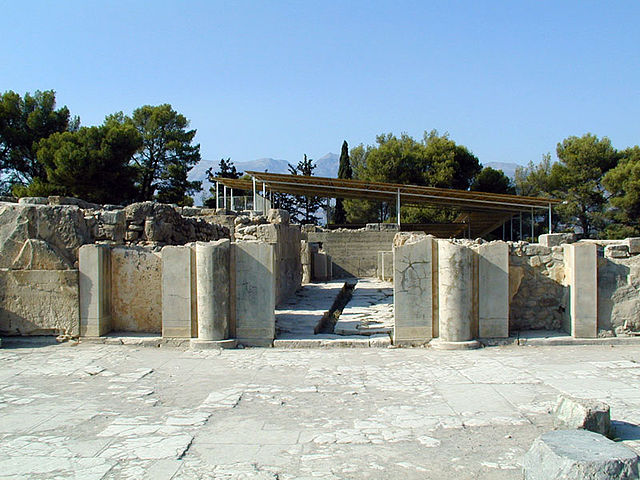Phaistos, also transliterated as Phaestos, Festos and Latin Phaestus, is a Bronze Age archaeological site at modern Faistos, a municipality in south central Crete. It is notable for the remains of a Minoan palace and the surrounding town.
View of Phaistos
Entryway to the palace
Archaeological site of Phaistos
Bird clasping a fish. Decoration of a clay alabastron from Kalyvia, Phaistos, Crete. Early postpalatial period (1350–1300 B.C.)
Linear A is a writing system that was used by the Minoans of Crete from 1800 BC to 1450 BC. Linear A was the primary script used in palace and religious writings of the Minoan civilization. It was succeeded by Linear B, which was used by the Mycenaeans to write an early form of Greek. It was discovered by the archaeologist Sir Arthur Evans in 1900. No texts in Linear A have yet been deciphered. Evans named the script "Linear" because its characters consisted simply of lines inscribed in clay, in contrast to the more pictographic characters in Cretan hieroglyphs that were used during the same period.
Linear A incised on tablets found in Akrotiri, Santorini
Linear A tablet, Chania Archaeological Museum
Linear A tablet from the palace of Zakros, Archeological Museum of Sitia
Minoan inscriptions, Linear A script, Phaistos








